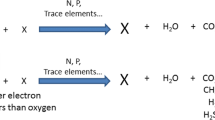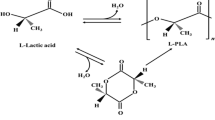Abstract
Chemical reactivity hazards of organic peroxides are major concerns of the chemical industry due to many serious incidents every year. Thermal hazard assessment for organic peroxides is of great importance for safe operations in chemical process industries. A new hazard evaluation method based on quantitative structure–property relationship (QSPR) was proposed to assess thermal hazard of organic peroxides from their molecular structures. Optimal molecular descriptors were determined to characterize thermal hazard parameters, including onset temperature (To), time to maximum rate under adiabatic condition (TMRad) and heat of reaction (ΔH), respectively. Both the probability and severity of the thermal risk were considered to evaluate the thermal hazards of organic peroxides comprehensively. To and TMRad were employed to describe the probability of thermal risk, while ΔH was used to describe the severity. Then, the thermal hazard rating was developed based on the molecular descriptors and a corresponding ranking criterion was also proposed with the thermal hazards being divided into five levels. After comparing and verifying with previously developed evaluation methods, the proposed assessment method in this work would be reasonably expected to provide an accurate ranking of the thermal hazards for organic peroxides.


Similar content being viewed by others
Abbreviations
- T o :
-
Onset temperature
- TMRad :
-
Time to maximum rate under adiabatic condition
- ΔH :
-
Heat of reaction
- QSPR:
-
Quantitative structure–property relationship
- DSC:
-
Differential scanning calorimetry
- ARC:
-
Accelerating rate calorimeter
- VSP2:
-
Vent sizing package 2
- GA:
-
Genetic algorithm
- MLR:
-
Multiple linear regression
- PI:
-
Probability index
- SI:
-
Severity index
- RHI:
-
Reaction hazard index
- THI:
-
Thermal hazard index
References
Chen WC, Yeh CT, Shu CM. Incompatible effects of specific acids on the thermokinetics of 1,1-bis(tert-butylperoxy)-3,3,5-trimethylcyclohexane. J Therm Anal Calorim. 2019;135:2747–57.
Chi JH, Wu SH, Shu CM. Thermal explosion analysis of methyl ethyl ketone peroxide by non-isothermal and isothermal calorimetric applications. J Hazard Mater. 2009;171:1145–9.
Lee MH, Chen JR, Das M, Hsieh TF, Shu CM. Thermokinetic parameter evaluation by DSC and TAM III along with accountability of mass loss by TG from the thermal decomposition analyses of benzoyl peroxide. J Therm Anal Calorim. 2015;122:1143–50.
Wang QS, Zhang YC, Rogers WJ, Mannan MS. Molecular simulation studies on chemical reactivity of methylcyclopentadiene. J Hazard Mater. 2009;165:141–7.
Cao CR, Liu SH, Huang AC, Lee MH, Ho SP, Yu WL, Shu CM. Application of thermal ignition theory of di(2,4-dichlorobenzoyl) peroxide by kinetic-based curve fitting. J Therm Anal Calorim. 2018;133:753–61.
Wei CY, Rogers WJ, Mannan MS. Layer of protection analysis for reactive chemical risk assessment. J Hazard Mater. 2008;159:19–24.
Stull DR. Linking thermodynamics and kinetics to predict real chemical hazards. J Chem Educ. 1974;51:A21.
Wang QS, Rogers WJ, Mannan MS. Thermal risk assessment and rankings for reaction hazards in process safety. J Therm Anal Calorim. 2009;98:225.
Yang L, Pan Y, Wang JH, Shang WJ, Lan JX, Jiang JC. A new method for assessing the thermal hazard of reactive substances. AIP Conf Proc. 2017;1890:040017.
Ando T, Fujimoto Y, Morisaki S. Analysis of differential scanning calorimetric data for reactive chemicals. J Hazard Mater. 1991;28:251–80.
Wu SH, Lin ML, Shu CM. Thermal hazard evaluation of tert-butyl peroxide using non-isothermal and adiabatic calorimetric approaches. J Therm Anal Calorim. 2011;109:975.
Chen WT, Chen WC, You ML, Tsa YT, Shu CM. Evaluation of thermal decomposition phenomenon for 1,1-bis(tert-butylperoxy)-3,3,5-trimethylcyclohexane by DSC and VSP2. J Therm Anal Calorim. 2015;122:1125–33.
Liu SH, Hou HY, Chen JW, Weng SY, Lin YC, Shu CM. Effects of thermal runaway hazard for three organic peroxides conducted by acids and alkalines with DSC, VSP2, and TAM III. Thermochim Acta. 2013;566:226–32.
Pan Y, Zhang YY, Jiang JC, Ding L. Prediction of the self-accelerating decomposition temperature of organic peroxides using the quantitative structure property Relationship (QSPR) approach. J Loss Prev Process Ind. 2014;31:41–9.
Wang BB, Zhou LL, Xu KL, Wang QS. Prediction of minimum ignition energy from molecular structure using quantitative structure–property relationship (QSPR) models. Ind Eng Chem Res. 2017;56:47–51.
Zhou LL, Wang BB, Jiang JC, Pan Y, Wang QS. Quantitative structure–property relationship (QSPR) study for predicting gas–liquid critical temperatures of organic compounds. Thermochim Acta. 2017;655:112–6.
Lu Y, Ng D, Mannan MS. Prediction of the reactivity hazards for organic peroxides using the QSPR approach. Ind Eng Chem Res. 2011;50:1515–22.
Zohari N, Keshavarz MH, Dalaei Z. Prediction of decomposition onset temperature and heat of decomposition of organic peroxides using simple approaches. J Therm Anal Calorim. 2016;125:887–96.
Grewer T, Frurip DJ, Harrison BK. Prediction of thermal hazards of chemical reactions. J Loss Prev Process Ind. 1999;12:391–8.
Wang QS, Wang JJ, Larranaga MD. Simple relationship for predicting onset temperatures of nitro compounds in thermal explosions. J Therm Anal Calorim. 2013;111:1033–7.
Duh YS, Wu XH, Kao CS. Hazard ratings for organic peroxides. Process Saf Prog. 2008;27:89.
Saraf SR, Rogers WJ, Mannan MS. Classifying reactive chemicals. Chem Eng Prog. 2004;100:34–7.
Zhang YY, Pan Y, Jiang JC, Ding L. Prediction of thermal stability of some reactive chemicals using the QSPR approach. J Environ Chem Eng. 2014;2:868–74.
Keller A, Stark D, Fierz H, Heinzle E, Hungerbuhler K. Estimation of the time to maximum rate using dynamic DSC experiments. J Loss Prev Process Ind. 1997;10:31–41.
Lv JY, Chen WH, Chen LP, Tian YT, Yan JJ. Thermal risk evaluation on decomposition processes for four organic peroxides. Thermochim Acta. 2014;589:11–8.
Wu SH, Chou HC, Pan RN, Huang YH, Horng JJ, Chi JH, Shu CM. Thermal hazard analyses of organic peroxides and inorganic peroxides by calorimetric approaches. J Therm Anal Calorim. 2012;109:355–64.
Zang N, Qian XM, Liu ZY, Shu CM. Thermal hazard evaluation of cyclohexanone peroxide synthesis. J Therm Anal Calorim. 2016;124:1131–9.
Yang Y, Tsai YT, Cao CR, Shu CM. Kinetic and thermal safety analysis for tert-butyl peroxy-3, 5, 5-trimethylhexanoate by advanced calorimetric technology. J Therm Anal Calorim. 2017;127:2253–62.
DRAGON for Windows (Software for Molecular Descriptor Calculations), Version 6.0.
Holland JH. Adaptation in natural and artificial systems. Ann Arbor: University of Michigan Press; 1975.
Leardi R, Boggia R, Terrile M. Genetic algorithms as a strategy for feature-selection. J Chemom. 1992;6:267–81.
Todeschini R, Consonni V. Handbook of molecular descriptors. New York: Wiley; 2000.
Prana V, Rotureau P, Andre D, Fayet G, Adamo C. Development of simple QSPR models for the prediction of the heat of decomposition of organic peroxides. Mol Inform. 2017;36:1700024.
Grewer T. Thermal hazards of chemical reactions. Amsterdam: Elsevier; 1994.
Wang BB, Yi H, Xu KL, Wang QS. Prediction of the self-accelerating decomposition temperature of organic peroxides using QSPR models. J Therm Anal Calorim. 2017;128:399–406.
Sun JH, Li YF, Hasegawa K. A study of self-accelerating decomposition temperature (SADT) using reaction calorimetry. J Loss Prev Process Ind. 2001;14:331–6.
Yu YH, Hasegawa K. Derivation of the self-accelerating decomposition temperature for self-reactive substances using isothermal calorimetry. J Hazard Mater. 1996;45:193–205.
Gao YJ, Xue Y, Lu ZG, Wang ZH, Chen Q, Shi N, Sun F. Self-accelerating decomposition temperature and quantitative structure–property relationship of organic peroxides. Process Saf Environ. 2015;94:322–8.
Yang D, Koseki H, Hasegawa K. Predicting the self-accelerating decomposition temperature (SADT) of organic peroxides based on non-isothermal decomposition behavior. J Loss Prev Process Ind. 2003;16:411–6.
Bosch CM, Velo E, Recasens F. Safe storage temperature of peroxide initiators: prediction of self-accelerated decomposition temperature based on a runaway heuristics. Chem Eng Sci. 2001;56:1451–7.
Carreto-Vazquez VH, Hernandez I, Ng D, Rogers WJ, Mannan MS. Inclusion of pressure hazards into NFPA 704 instability rating system. J Loss Prev Process Ind. 2010;23:30–8.
Zhang F, Xie CX, Zhang HZ, Wang ZG. Research on classification of chemical reactive hazards and its application. China Saf Sci J. 2010;20:123–8.
Acknowledgements
This research was supported by National Program on Key Basic Research Project of China (2017YFC0804801, 2016YFC0801502) and National Natural Science Fund of China (No. 21436006, 21576136, 51804167).
Author information
Authors and Affiliations
Corresponding authors
Ethics declarations
Conflict of interest
The authors declare no competing financial interest.
Additional information
Publisher's Note
Springer Nature remains neutral with regard to jurisdictional claims in published maps and institutional affiliations.
Rights and permissions
About this article
Cite this article
Pan, Y., Qi, R., He, P. et al. Thermal hazard assessment and ranking for organic peroxides using quantitative structure–property relationship approaches. J Therm Anal Calorim 140, 2575–2583 (2020). https://doi.org/10.1007/s10973-019-08966-3
Received:
Accepted:
Published:
Issue Date:
DOI: https://doi.org/10.1007/s10973-019-08966-3




